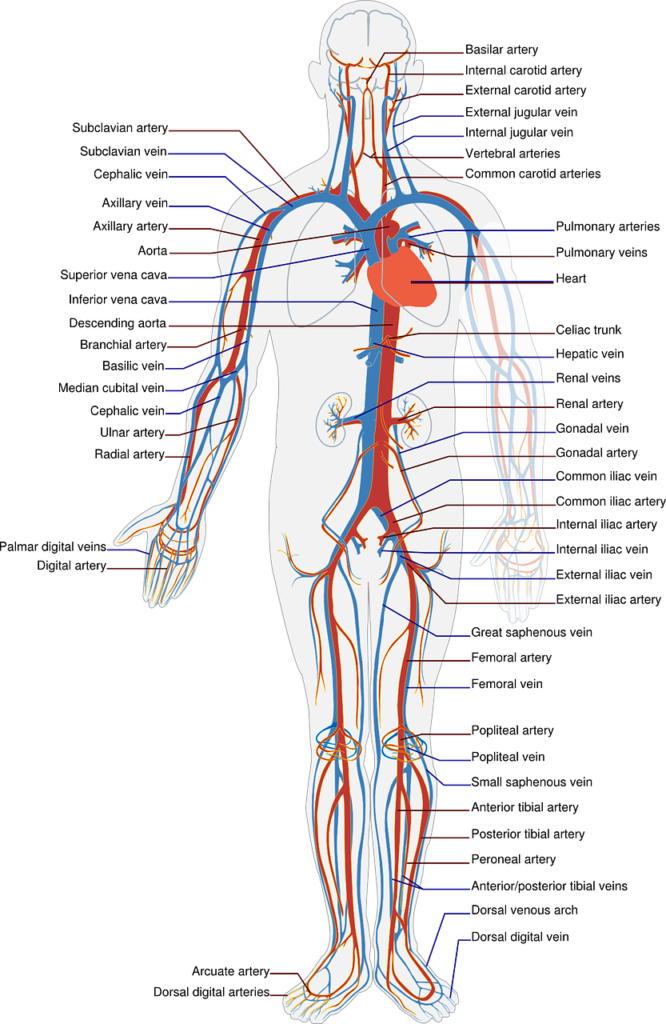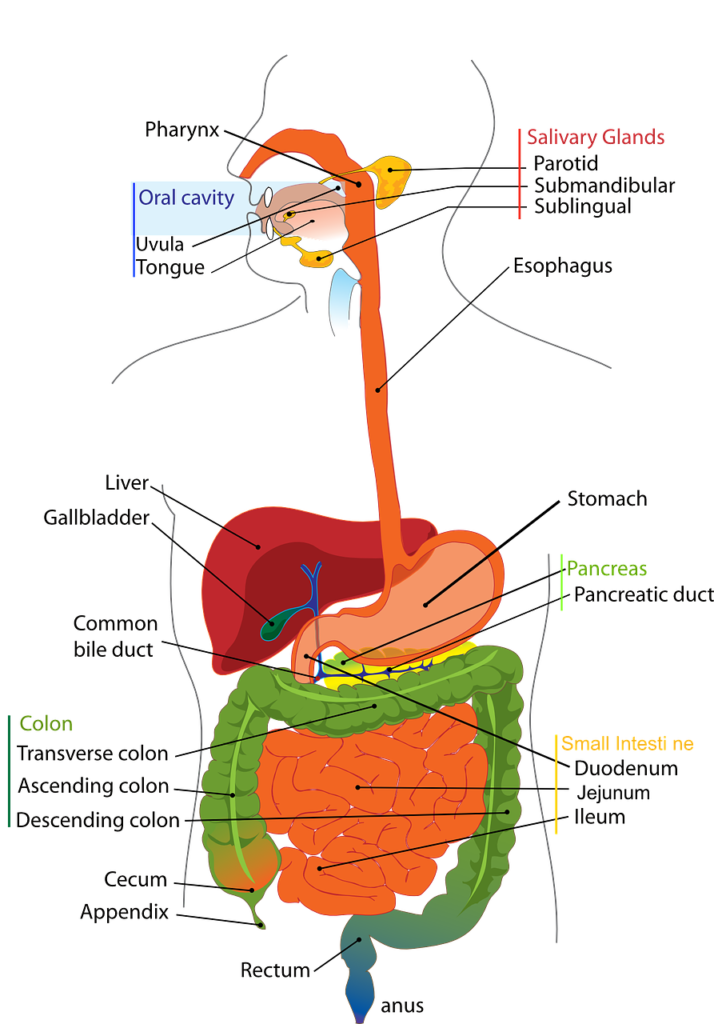All about the Human body
System of organs:
Skeletal system:
This system is all about a skeleton’s body framework that provides protection and movement from one place to another.
The skeletal system consists of two parts
1) Axial skeleton
2) Appendicular skeleton
Axial skeletal system:
It contains the vertical axis of the body like the head, chest, etc.
Skull bones
1) Cranial bones, which protect the brain.
2) Facial bones, 14 are facial bones, present on the front of the skull.
There are more bones present like in the ear, malleus, stapes, and incus. The vertebral column consists of 26 bones. The 24 are all vertebrae and are further divided into the following parts.
1) Cervical vertebrae
2) Thoracic vertebrae
3) Lumbar vertebrae
Appendicular skeleton:
It is made up of the bone of the legs and arms.
Pectoral girdle:
It is also called shoulder girdle.
Upper limbs
1) Ulna
2) Radius
3) Humerus
4) Carpals
5) Phalanges
6) Metacarpals
Pelvic girdle:
It is commonly called hips.
The hipbone contains three parts.
1) Ilium
2) Ischium
3) Pubis
Lower limbs:
1) Femur
2) Tibia
3) Fibula
4) Patella
5) Tarsals
6) Metatarsals
7) Phalanges
Muscular system:
The muscles produce heat and allow movement and stability. Proper diet and exercise are necessary for the health and function of the muscular system of the human body. Exercise strengthens and help in muscle growth, while a balanced diet provides necessary nutrient like proteins.
There are three types of muscles in the human body.
1) Skeletal muscle
2) Smooth muscle
3) Cardiac muscle

Circulatory system:
It is also called the cardiovascular system.
It plays an important role in maintaining homeostasis and delivering essential substances to cells and other body parts.
Types of circulation:
Almost two types of circulation in the human body.
1) Pulmonary circulation
2) Systematic circulation
The circulatory system consists of the following major components.
1) Heart
2) Blood vessels
3) Blood
Blood vessels consist of three components.
1) Arteries
2) Veins
3) Capillaries
Blood also consists of the following parts.
1) Red blood cells (Erythrocytes)
2) White blood cells (Leukocytes)
3) Platelets (Thrombocytes)
4) Plasma

Respiratory system:
The respiratory system consists of a collection of organs in the human body responsible for the exchange of gases like breathing, between the body and the surrounding.
It contains the following parts.
1) Nasal cavity
2) Larynx
3) Pharynx
4) Sinuses
5) Lungs
6) Diaphragm
7) Bronchi
Nervous system:
Network of specialized cells responsible for receiving, transmitting, and processing information through electrical and chemical signals allowing for communication and different body functions.
It can control the activity of the body.
It has two main parts.
1) Central nervous system (CNS)
2) Peripheral nervous system (PNS)
Digestive system:
A complex set of organs that work together to break down food and eliminate waste in the human body. It plays an important role in the absorption and digestion of nutrients necessary for energy production, growth, and overall functioning of the body.
The major components of the digestive system are;
1) Mouth
2) Esophagus
3) Stomach
4) Liver
5) Gallbladder
6) Pancreas
7) Small intestine
8) Large intestine
9) Rectum
10) Anus

Reproductive system (Male):
The male reproductive system is a collection of organs, and glands, that work together to produce and deliver sperm for reproduction. It plays an important role in sexual reproduction.
It consists of the following components.
1) Penis
2) Scrotum
3) Testicles
4) Urethra
Reproductive system (Female):
The complex system of organs and hormones that are involved in the production of eggs, fertilization, pregnancy, and childbirth.
It also plays an important role in the menstrual cycle.
The major components of the female reproductive system include;
1) Vagina
2) Uterus
3) Ovaries
4) Fallopian tubes
5) Mammary glands
- All about the Human body and its parts:
Number of bones in adults is 206.
The number of muscles is 639
The number of kidneys in the body is 2
The number of milk teeth is 20
Number of ribs in the human body 24 (12 pairs)
Number of heart chambers 4
The largest artery in the human body is “the aorta”
Normal blood pressure is 120/80mmHg
The pH of blood is 7.4
The number of vertebrae in the spine is 33
The number of vertebrae in the neck is 7
Number of bones in the middle ear 6
Number of bones in the face 14
Number of bones in the skull 22
Number of bones in the chest 25
The number of bones in arms is 6
Number of muscles in human arms 72
Number of pumps in heart 2
The largest organ is the skin
The largest gland is “the liver”
Biggest cell female ovum
Smallest cell male sperm
The smallest bones are stapes
The first transplanted organ is the heart
The average length of the small intestine is 7m
The average length of the large intestine is 1.5m
The average weight of the newborn baby is 2.6kg
The pulse rate in one minute is 72 times
Normal body temperature 37 °c (98.4F)
The average blood volume of 4 to 5 liters
The life span of red blood cells is 120 days
The life span of white blood cells is 10 to 15 days
Pregnancy period 280 days (40 weeks)
Number of bones in human foot 33
Number of bones in each wrist 8
Number of bones in hand 27
Largest endocrine gland thyroid
Largest lymphatic organ spleen
The largest part of the brain Cerebrum
Largest and strongest bone femur
Smallest muscle stapedius (Middle ear)
Number of chromosomes 46 (23 pairs)
Number of bones in a newborn baby 306
The viscosity of blood is 4.5 to 5.5
Universal donor blood group O
Universal recipient blood group AB
Largest White blood cells monocyte
The smallest WBC is Lymphocyte
Increase red blood cell count called polycythemia
The blood bank in the body is the spleen
Non-nucleated blood cell is red blood cell
Red blood cells produced in the bone marrow
The river of life is called the blood
Normal blood cholesterol level 250mg/dl
The fluid part of blood is plasma
If you study 9th, and 10th class biology then
These questions are mostly asked in Pakistan competitive exams like PPSC, CSS, PMS, KPPDC, GK, FPSC, and other board exams.
#All about human biology, #Biology, #Human Biology



Wow